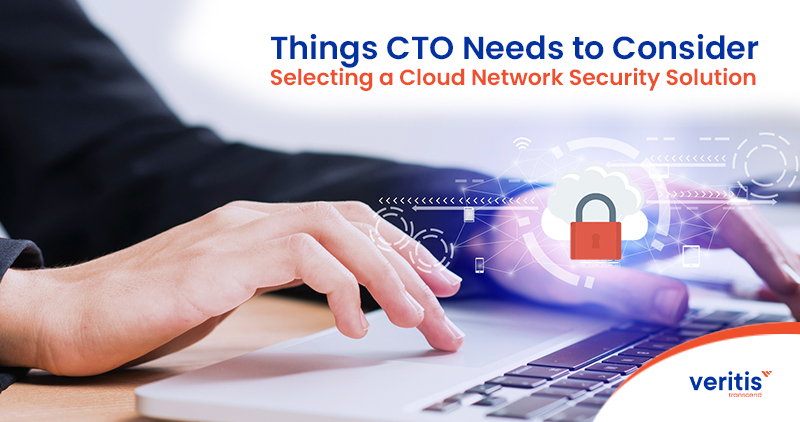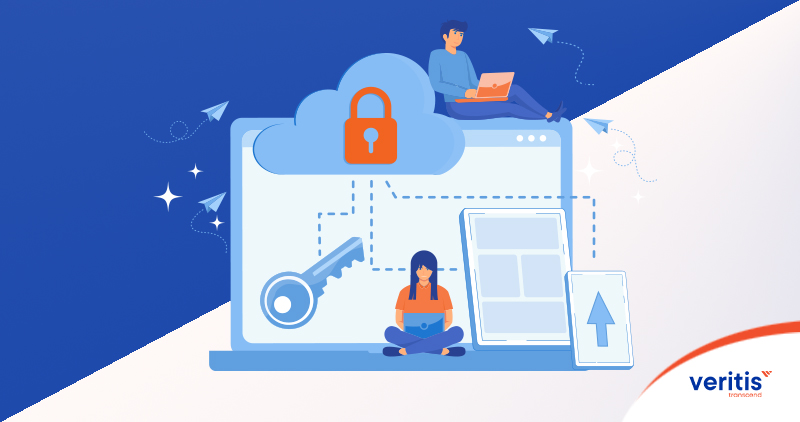
Table of contents
As organizations increasingly migrate their data and applications to the cloud, cyber attackers find new ways to exploit vulnerabilities, gain unauthorized access, and compromise sensitive information. A particularly concerning technique, the “watering hole attack,” has evolved within cloud environments, allowing cybercriminals to infiltrate production systems and cause significant harm.
With cloud adoption critical to business growth, securing cloud infrastructure has become more complex. Experts and security consultants recommend a multi-layered, comprehensive approach to protect cloud deployments effectively. To help CTOs navigate this challenge, we have outlined key factors to consider when selecting a cloud network security solution. But before diving into the specifics, let’s first understand the fundamentals of cloud network security.
What is Cloud Network Security?

Cloud network security involves implementing measures to prevent unauthorized access to data and applications stored in the cloud. It encompasses tools, policies, and services to safeguard cloud computing environments from internal and external threats.
The growing reliance on cloud-based solutions offers enhanced data security and operational efficiency. However, organizations must establish robust security measures tailored to their data sensitivity and compliance requirements to leverage these advantages fully.
Useful link: Cloud Implementation Services: Strategy, Solutions and Benefits
Key Factors to Consider When Choosing a Cloud Network Security Solution

Selecting the right cloud security solution requires thoroughly evaluating security capabilities and business needs. Here are the critical aspects CTOs should consider:
1) Advanced Threat Protection
Modern cloud threats go beyond simple malware; they include zero-day vulnerabilities, ransomware, and lateral attacks. An effective cloud security solution should provide:
- Real-time threat intelligence
- Deep packet inspection and traffic analysis
- Sandboxing techniques to isolate suspicious activities
- Protection for both East-West (lateral movement) and North-South (incoming/outgoing) traffic
2) Seamlessness Communications and Accessibility
The CTO must ensure everyone knows the threat environment, security policies, and processes. The cloud security solution’s user interface should be simple to use and optimized for accessibility. This ensures that administrators and end users may both access the required security protocols. Communication is essential to ensure end users know their obligations and security standards. Once they know what is expected, they will be more aware of their activities and less prone to making mistakes.
3) Robust Encryption Mechanisms
Encryption is critical to protecting cloud-stored data from unauthorized access. A strong cloud security solution should:
- Encrypt data both at rest and in transit
- Offer easy-to-manage encryption controls for administrators
- Prevent unauthorized access even if data is intercepted
Useful link: What is Cloud Computing?
4) Comprehensive Data Protection Policies
Even with robust security measures, human error remains a key vulnerability. CTOs should implement policies that:
- Limit unnecessary data uploads to the cloud
- Outline detailed procedures for handling data breaches
- Define clear security protocols for both administrators and end users
5) Cross-Platform Compatibility
Many cloud security solutions are designed for specific operating systems, limiting their effectiveness. To ensure seamless protection, CTOs should:
- Select solutions that support multiple devices and OS environments
- Ensure security measures are uniformly applied across platforms
6) Visibility and Transparency
Comprehensive monitoring and logging are crucial for detecting and responding to threats. The cloud security solution should:
- Provide real-time dashboards with actionable insights
- Offer clear and contextualized logs, replacing raw IP addresses with identifiable cloud object names
- Facilitate forensic analysis in case of a breach
7) Scalability and Remote Access Security
As organizations scale, security solutions must adapt accordingly. The ideal solution should:
- Support multi-factor authentication for secure remote access
- Include endpoint compliance scanning
- Offer encrypted data transmission to protect users working remotely
8) Integration with SD-WAN
Software-defined wide-area networks (SD-WAN) are becoming a standard in cloud connectivity. CTOs must ensure their cloud security solution:
- Seamlessly integrates with SD-WAN technology
- Maintains network performance and security without disruptions
Conclusion
With businesses rapidly embracing cloud solutions, securing cloud environments is more critical than ever. CTOs must proactively ensure their organization’s cloud network security solution aligns with industry standards, regulatory requirements, and evolving cyber threats.
At Veritis, we bring over 20 years of industry experience in cloud security, delivering 100% quality assurance through cutting-edge solutions. Our team comprises AWS, Azure, and GCP-certified cloud consultants, ensuring expertise across multiple cloud environments. Trusted by industry leaders, including Harshi Corp and AWS, we have built a strong reputation for excellence. With a 100% client satisfaction track record, we are committed to providing robust, scalable, and secure cloud network security solutions.
Focusing on threat protection, seamless integration, robust encryption, and scalability can help businesses maintain data integrity, protect sensitive information, and ensure compliance. A well-structured cloud security strategy is no longer optional—it is essential for sustaining business growth and resilience in an increasingly digital world.
Got Questions? Schedule A Call
Additional Resources:
- 10 Cloud Computing Trends Which Shall Dominate 2025
- Data Security in the Cloud Solutions Every Modern Business Needs
- The Future of Technology and the Cloud Computing Role in Edge AI
- Top 10 Security Issues in Cloud Computing
- How Does Cloud Computing Help Fintech?
- Why Data Driven Culture is Important for You